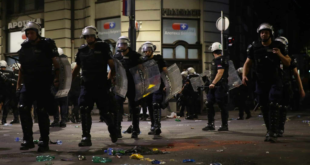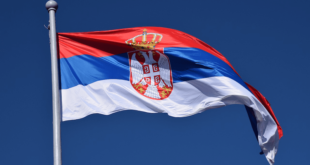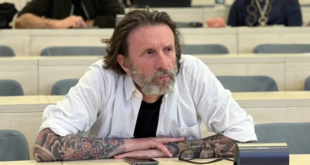Kosovo Albanians will proclaim independence from Serbia on Sunday, ending a long chapter in the bloody breakup of Yugoslavia but cementing a bitter ethnic front line in the Balkans.The major Western powers back independence for the province, which has been run by the United Nations since NATO drove out Serb forces in 1999. Serbia and Russia are opposed.
Here is a brief profile of Kosovo, an ethnic crossroads in the heart of the Balkans and the cause of NATO’s first “humanitarian war” in 1999.
HISTORY
* Kosovo was first inhabited by Illyrian and Thracian tribes, ruled by the Romans then populated by Slavs in the 6th century. It became part of the Kingdom of Serbia in the early 13th century, with a mixed population of Serbs, Albanians and Vlachs. The Nemanjic dynasty made it the spiritual heartland of Serbia, giving lands to the Orthodox Church and building monasteries that stand today.
ETHNIC MAKEUP
* Many Serbs left in the 500 years after the Ottoman Empire defeated the Serbs at the 1389 Battle of Kosovo. The Albanians, converts to Islam, grew in number. Mutual expulsions and migrations to and from Albania in the early 20th century changed Kosovo’s makeup. Today, 2 million Albanians form 90 percent of the population. Some 120,000 Serbs remain in Kosovo, just under half in the northern enclave and the rest in scattered villages protected by NATO.
POLITICS & ECONOMY
* Landlocked and poor apart from mineral deposits, Kosovo was an autonomous region of the Socialist Yugoslav Federation and had effective self-government in 1974. But ethnic tensions escalated in the 1980s as Yugoslavia began to crumble and economic conditions deteriorated. Populist Slobodan Milosevic used Serb nationalism as a springboard to power in 1989, restricting Albanian rights in education and local government. Strikes, protests and violence led to Belgrade declaring a state of emergency in 1990, sending in the Yugoslav army and police.
WAR
* Albanians have officially demanded independence since they held renegade elections in 1992 which made pacifist leader Ibrahim Rugova president of a self-declared republic. The demand was ignored amid the wider Balkan wars and in the late 1990s ethnic Albanian Kosovo Liberation Army guerrillas launched an armed rebellion. Serb forces hit back so hard in 1998 that 100,000 Albanians fled to the hills and NATO powers warned Milosevic they would not tolerate another round of “ethnic cleansing” in the Balkans. Peace talks in France failed and in March 1999 NATO started bombing Serbia to force it to withdraw its forces from Kosovo. Some 800,000 Albanians fled or were expelled to Macedonia and Albania before Milosevic gave in 78 days later. As his forces pulled out, up to 200,000 Serbs and other ethnic minorities left as well.
LIMBO
* Kosovo has been administered by the United Nations, with NATO troops as peacekeepers, since June 1999. Unemployment is more than 50 percent. Kosovo’s uncertain future has deterred outside investment. Spasms of ethnic violence, mostly by Albanians against Serbs, and organized traffic of contraband and people, have tarnished its image with the West. Albanian leaders say only independence from Serbia can cure these ills. Almost two years of Serb-Albanian negotiations ended in failure in December, and the major Western powers say they are ready to overrule Russian opposition and recognize a declaration of independence by Kosovo Albanians.
 Eurasia Press & News
Eurasia Press & News



